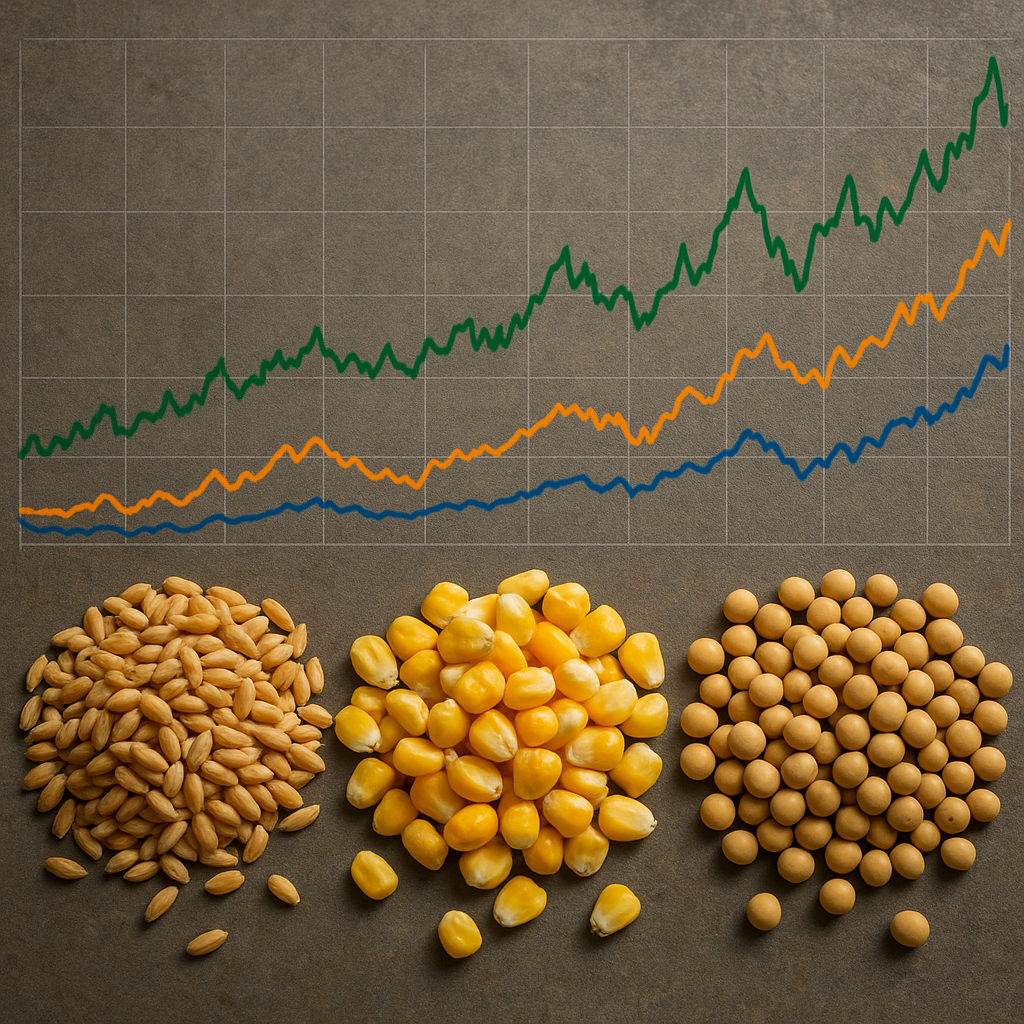The global grain landscape is undergoing a notable transformation as barley steps into the spotlight among international exporters. Long overshadowed by wheat and corn, barley is now capturing attention for its economic potential and diverse applications. From human nutrition to animal feed, brewing to industrial uses, this humble cereal is carving out new niches in the competitive market. This article delves into the drivers behind barley’s rising popularity, highlighting shifts in demand, sustainability considerations, and strategic export initiatives that are reshaping grain trade dynamics.
Shifting Global Demand for Barley
Over the past decade, the global appetite for barley has expanded, fueled by growing consumer awareness of its nutritional profile and versatile nature. Unlike more starch-heavy cereals, barley delivers a unique blend of dietary nutrients and functional benefits, positioning it as an attractive ingredient for health-conscious markets. This shift in preferences has ripple effects across production zones, trade routes, and price mechanisms.
Key Drivers of Rising Demand:
- Health Trends: As consumers seek whole grains rich in dietary fiber and antioxidants, barley’s reputation as a heart-healthy option has soared.
- Beverage Industry: Brewing giants are diversifying their malt sources, leading to strategic contracts with barley suppliers.
- Animal Nutrition: Livestock producers value barley’s balanced protein and energy content, bolstering demand for high-quality feed grains.
- Industrial Applications: Emerging bioplastics and bioethanol projects are leveraging barley’s fermentable sugars.
Regional Consumption Patterns
In North America and Europe, consumers are integrating barley into everyday meals, from breakfast cereals to snack products. Meanwhile, in parts of Asia and Africa, traditional recipes are being revitalized with barley-based porridge and flatbreads. These diversified applications broaden trade opportunities and encourage exporters to tailor crop varieties for specific culinary and processing requirements.
Advantages of Barley in Sustainable Agriculture
Environmental pressures and resource constraints are prompting agricultural stakeholders to explore crops that deliver high yields with minimal inputs. Barley emerges as a frontrunner in sustainability discussions due to its adaptability and lower water footprint compared to other cereals. Exporters emphasize these credentials when positioning barley on the world stage.
Resilience and Resource Efficiency
Barley’s inherently robust genetics allow it to thrive in marginal soils and cooler climates, reducing the need for intensive irrigation and chemical treatments. This resilience translates into cost savings for farmers and attractive value propositions for importers seeking a reliable value chain partner.
Environmental Benefits at a Glance:
- Reduced reliance on synthetic fertilizers thanks to nitrogen-efficient varieties
- Lower pesticide usage due to genetic resistance to common fungal pathogens
- Enhanced soil health via barley’s short growing cycle and biomass contributions
- Compatibility with crop rotation systems that boost overall farm productivity
The emphasis on sustainable practices resonates strongly with consumer-facing brands, which increasingly incorporate eco-friendly narratives into product labeling and marketing. Barley exporters capitalize on these trends by securing sustainability certifications and demonstrating compliance with international environmental standards.
Market Trends and Export Strategies
Intensifying competition in the global grain sector has compelled exporters to adopt innovative strategies to differentiate their barley offerings. Whether through value-added processing, niche variety development, or strategic partnerships, the goal remains consistent: capture market share while safeguarding economics of scale.
Innovation in Breeding and Processing
Seed companies and agricultural research institutions are collaborating to engineer barley strains with tailored characteristics—higher protein content, optimized starch profiles, and enhanced drought tolerance. Concurrently, processing facilities are investing in milling and sorting technologies that yield premium-grade products for specialized end uses, from gluten-free flours to craft brewing malts.
Strategic Export Approaches:
- Building long-term supply contracts with major brewing conglomerates in Europe and Asia
- Forming cooperatives to pool resources and negotiate better logistics rates for bulk shipments
- Pursuing geographic diversification to reduce reliance on any single market or currency
- Leveraging digital platforms and blockchain for transparent supply chain tracking
These initiatives are complemented by participation in international trade fairs, hosting buyer missions, and showcasing barley’s versatility through culinary demonstrations and product sampling events. Forward-thinking exporters also explore direct-to-consumer channels, offering specialty barley flours and grains via e-commerce platforms.
Overcoming Challenges and Looking Ahead
Despite its growing acclaim, barley faces hurdles such as stiff competition from established cereals, fluctuating climate conditions, and shifting tariff regimes. Exporters must remain agile, leveraging robust risk management frameworks and monitoring geopolitical developments that influence trade flows.
Risk Mitigation Tactics
Effective strategies include diversifying crop portfolios, investing in weather-resilient agronomy practices, and engaging in dialogue with policymakers to shape favorable export policies. Grain merchants also adopt futures contracts and crop insurance solutions to hedge against price volatility and yield uncertainty.
Looking ahead, barley’s trajectory appears promising. As innovation accelerates and consumer preferences continue to evolve, this versatile grain stands poised to secure a larger slice of the global grain pie. Exporters who align production, processing, and marketing strategies with emerging trends in health, innovation, and environmental stewardship will find themselves at the forefront of a barley revolution.













